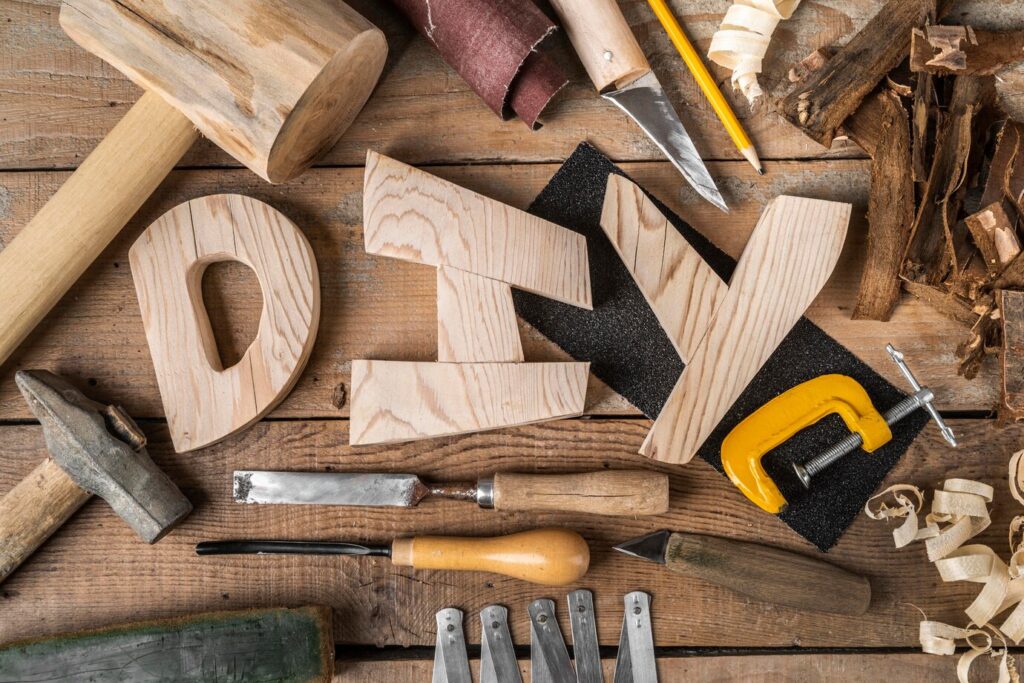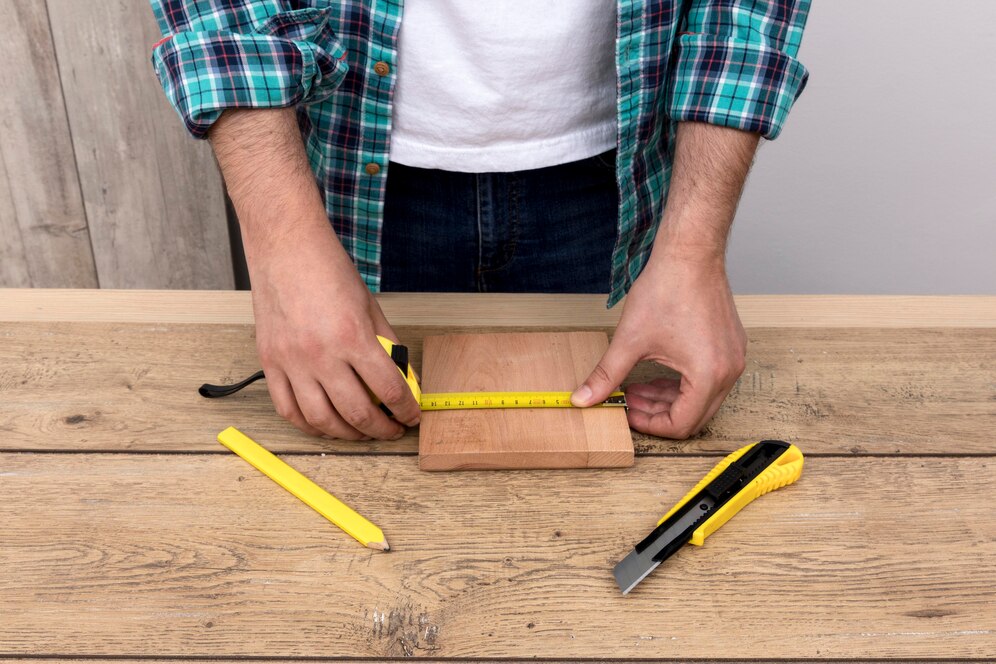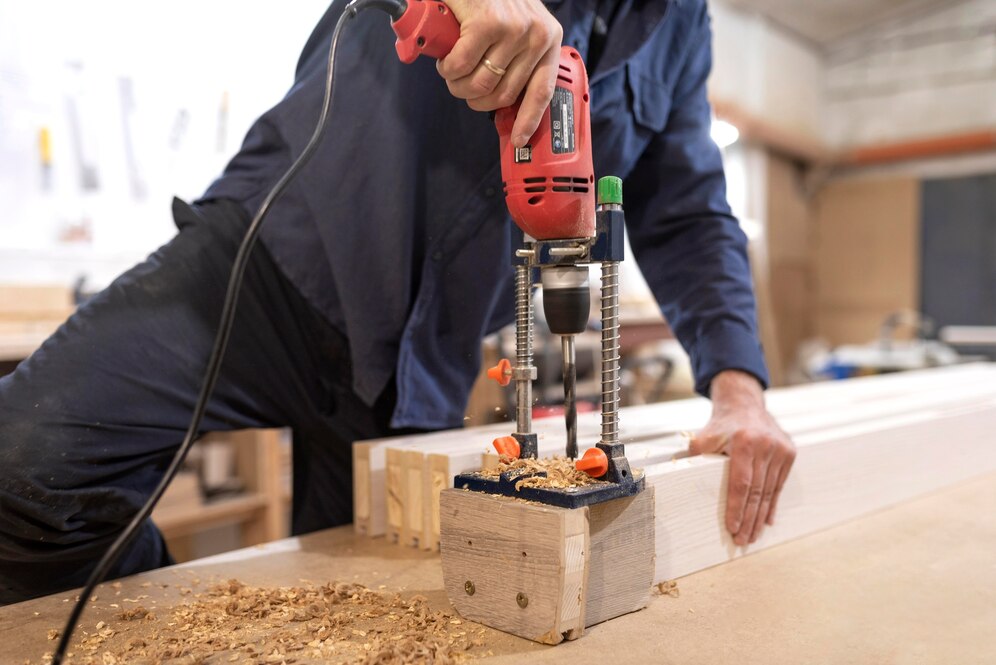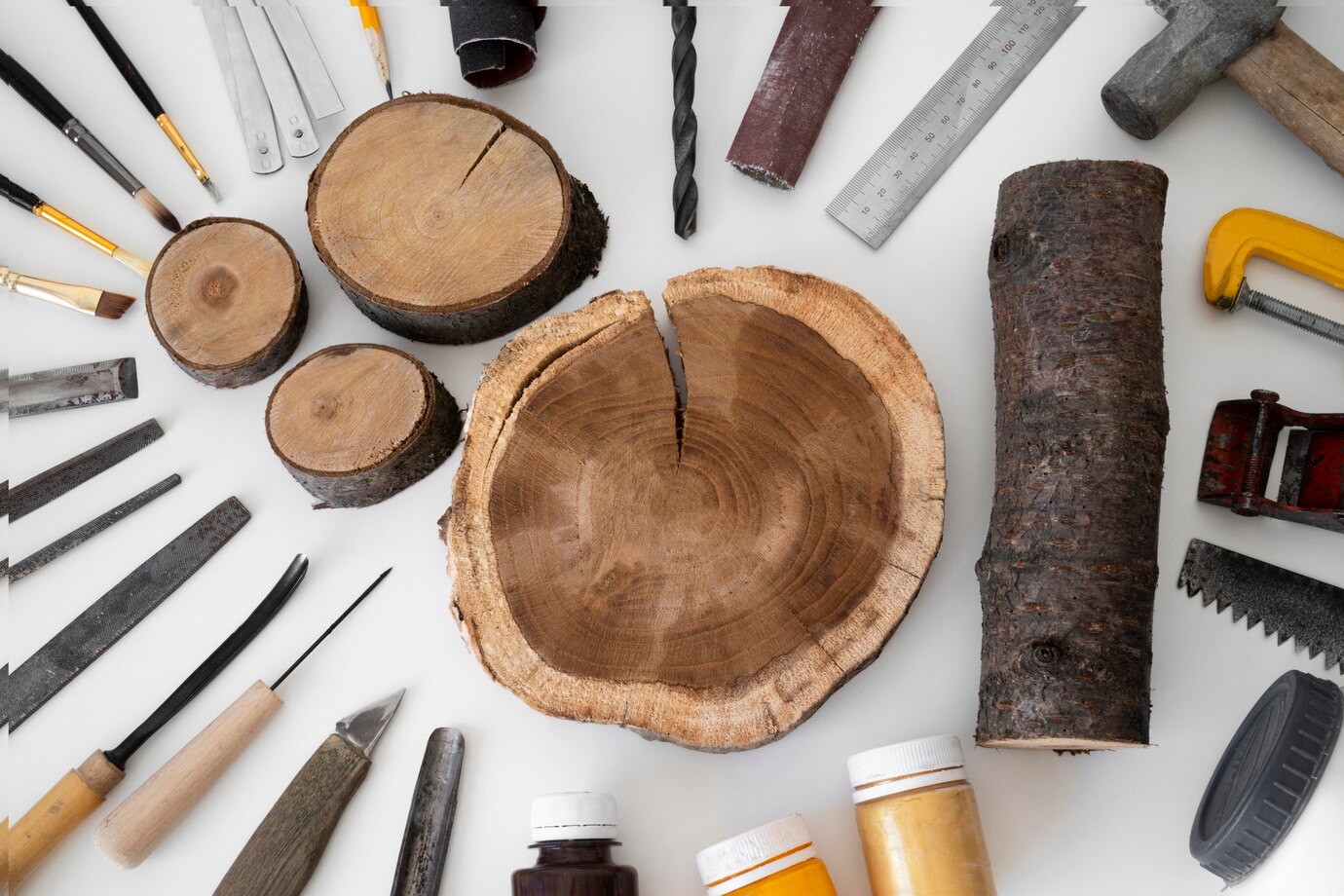The DIY & Crafts Blog

Essential Woodworking Tools for Starters
Getting started with woodworking can be both exciting and overwhelming. With so many tools available, determining which ones are necessary for beginners can be difficult. Having the right basic woodworking tools not only makes your projects easier but also ensures precision and safety.
This guide will cover the must-have woodshop tools that every beginner should own. Whether you’re building furniture, crafting home decor, or working on small DIY projects, these woodcraft beginner essentials will help you get started with confidence.
Woodworking is a skill that takes time to master, but having the right tools from the start will make your learning journey smoother. Understanding the different tools and their uses will help you develop proper techniques and build high-quality projects from day one.
Hand Tools Every Beginner Should Own

1. Measuring & Marking Tools: The Foundation of Accuracy
Precision is key in woodworking, and proper measuring and marking tools help ensure accuracy in every cut. Without proper measurement, even the most beautifully designed project can fail due to misalignment or poor fitting.
- Tape Measure – Essential for measuring the dimensions of wood pieces accurately.
- Combination Square – Helps mark straight lines and check for 90-degree angles, ensuring square joints.
- Marking Gauge – Useful for making precise, repeatable marks, especially for joinery.
- Pencil & Marking Knife – A sharp marking knife provides more precise lines than a standard pencil, reducing guesswork when cutting.
- Callipers – Ideal for measuring thickness and small dimensions with precision, particularly for fine woodworking and detailed projects.
2. Cutting Tools: Creating Precise Cuts
Cutting is a fundamental part of woodworking, and having the right saws ensures clean and accurate cuts. Using the right saw for the task reduces effort and increases the precision of your cuts.
- Hand Saw – A versatile tool for cutting wood without requiring electricity. Great for beginners learning the feel of cutting through wood.
- Coping Saw – Great for intricate cuts and curves, often used for decorative woodworking.
- Japanese Pull Saw – Cuts on the pull stroke, making it easier to control and achieve fine, clean cuts.
- Dovetail Saw – Useful for detailed joinery work such as dovetail joints, commonly used in furniture making.
- Utility Knife – Handy for trimming edges, cutting veneer, and making small precision cuts.
3. Chisels & Mallets: Refining Your Work
Chisels are indispensable for detailed carving and joinery work. They allow for fine adjustments and shaping where saws cannot reach.
- Bevel Edge Chisels – Perfect for shaping and smoothing joints, widely used in furniture making.
- Mortise Chisels – Designed for cutting deep, precise mortises, crucial for strong joinery.
- Mallet – Used to drive chisels without damaging the tool handle, ensuring accurate and controlled cuts.
4. Clamping Tools: Holding Pieces Securely
Clamps hold pieces in place, making assembly easier and ensuring precise joins. Stability is essential when working with adhesives or assembling complex projects.
- Bar Clamps & C-Clamps – Essential for glueing and securing wood pieces together while drying.
- Quick-Grip Clamps – Allow for one-handed operation, perfect for solo projects or quick holds.
- Corner Clamps – Help hold pieces at a 90-degree angle for precise joinery, useful when making frames or boxes.
5. Sanding & Finishing Tools: Achieving a Professional Look
A well-sanded surface is key to achieving a professional-looking final product. Finishing touches make a difference between a rough, amateur project and a smooth, polished masterpiece.
- Sandpaper (Various Grits) – Essential for smoothing wood before staining or painting.
- Block Plane – Used to shape edges, remove rough surfaces, and refine joints.
- Cabinet Scraper – Helps create a smooth finish on hardwood surfaces, an alternative to sanding in some cases.
- Wood Finish & Brushes – These products protect wood and enhance its natural beauty. They also prevent moisture damage and wear.
Power Tools for Beginner Woodworkers

Hand tools may be the foundation, but power tools are the game-changers. They slice through woodworking tasks with speed and precision. As you improve your skills, using these electric wonders helps you take on bigger and more complex projects. Let the tools do the heavy lifting while you craft your masterpieces!
1. Drill & Driver Set: Essential for Fastening
A power drill is a must-have for any woodshop.
- Cordless Drill – Useful for drilling holes and driving screws with ease.
- Drill Bits & Countersink Bits – Ensures clean holes and flush screws for a professional finish.
- Impact Driver – Delivers extra power when driving screws into dense wood, preventing tripping.
2. Jigsaw: Cutting Curves with Ease
A jigsaw is ideal for cutting curves and intricate shapes.
- Adjustable Speed Jigsaw – Provides better control over different types of cuts.
- Variety of Blades – Helps adapt to different wood thicknesses and materials for precise cutting.
3. Circular Saw: Making Straight Cuts Efficiently
For straight, long cuts, a circular saw is an excellent tool.
- Adjustable Depth & Angle Settings – Allows for different types of cuts with precision.
- Guide Rail – Makes every cut precise, especially with large wood sheets.
- Track Saw – A precise choice over a circular saw. It makes clean, straight cuts easily.
4. Random Orbital Sander: Achieving a Smooth Finish
Sanding by hand can be time-consuming, making a power sander a great addition.
- Random Orbital Motion – Reduces visible sanding marks, creating a smooth, even surface.
- Multiple Sanding Discs – Provides flexibility for various projects and different wood types.
5. Table Saw (For Advanced Beginners)
A table saw is a key tool in any woodshop. It can really help when building bigger projects.
- Rip Fence & Miter Gauge – Ensures accuracy and control for repeated cuts.
- Blade Guard & Safety Features – Keeps hands safe from moving blades to prevent accidents.
Setting Up a Beginner-Friendly Woodshop
1. Choosing a Workspace
- Find a well-ventilated area with enough space to work comfortably.
- Ensure proper lighting for better visibility and precision.
- Think about adding dust collection systems. They help keep the area clean and avoid health problems.
2. Organising Your Tools
- Use pegboards or tool racks for easy access and efficient workspace management.
- Invest in a workbench with storage to keep tools organised and within reach.
- Label drawers and containers. This helps you find small tools and accessories fast. It saves you time and effort.
3. Maintaining Your Tools
- Keep tools clean and rust-free by wiping them down after use and storing them properly.
- Sharpen blades and chisels regularly to maintain performance and efficiency.
- Keep power tools in a dry, temperature-controlled space. This helps prevent damage and makes them last longer.
Conclusion

Embarking on your woodworking journey starts with the right tools. Basic woodworking tools pave the way for smooth sailing and stunning creations. From reliable hand tools like saws and chisels to powerful tools like drills and sanders, having the right gear lets you work quickly and safely.
With this woodcraft beginner essentials guide in hand, you’ll be equipped to tackle your first projects with flair. Investing in essential woodshop tools early changes beginner projects into pro masterpieces. This way, every project becomes a true labour of love!
What tools are you excited to use in your woodshop? Let us know in the comments!









